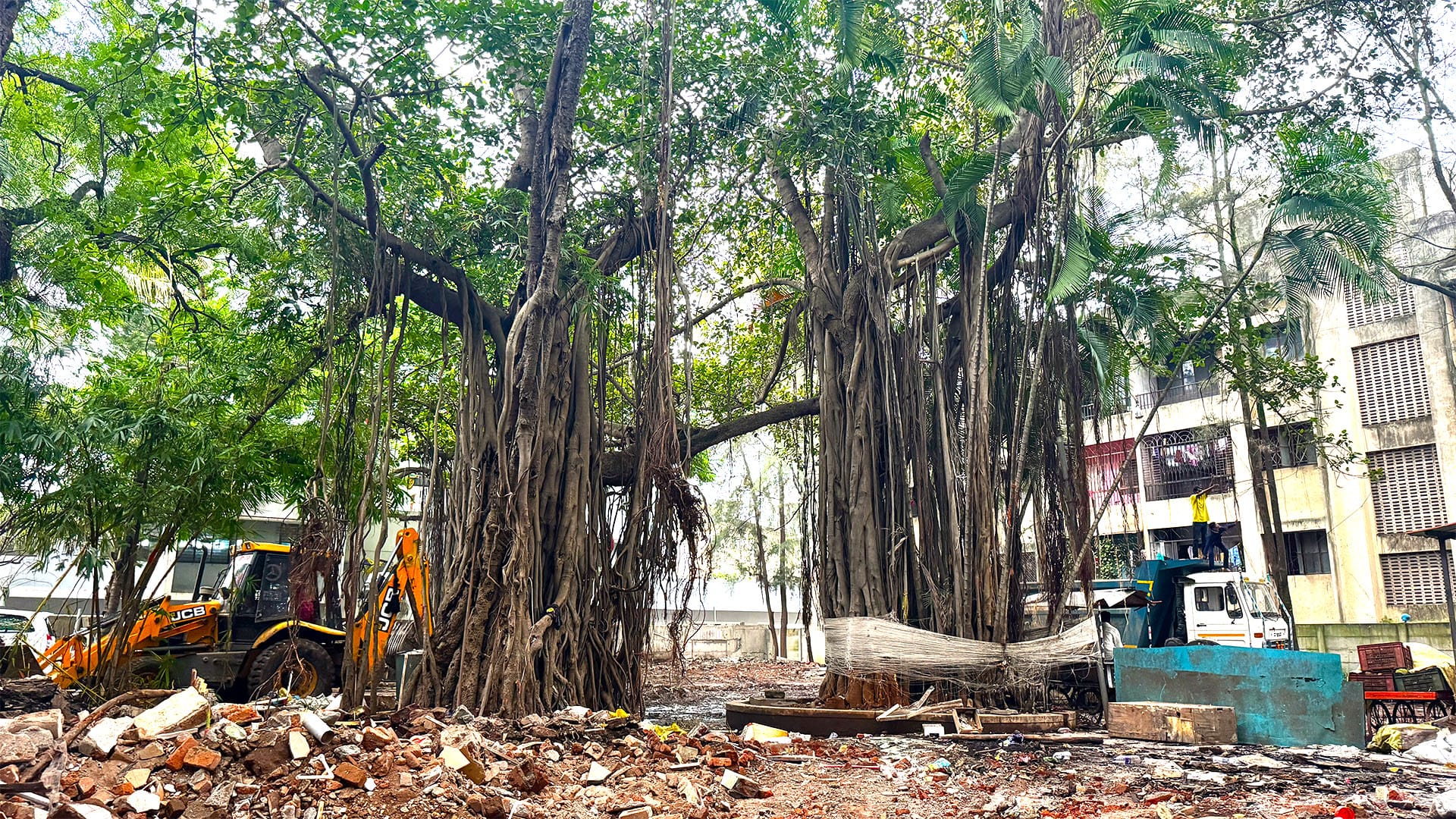Early clearance work has started along the Ram Kal Path project route in Nashik, with the compound wall near Sita Gufa demolished which makes Panchavati’s sacred banyan trees now accessible to devotees for the first time in years.
The garden perimeter in front of Kalaram Temple has also been taken down which creates much needed open space in the vicinity of the temple.
In the latest Nashik News, early works on the Ram Kal Path project have begun near Sita Gufa and Kalaram Temple
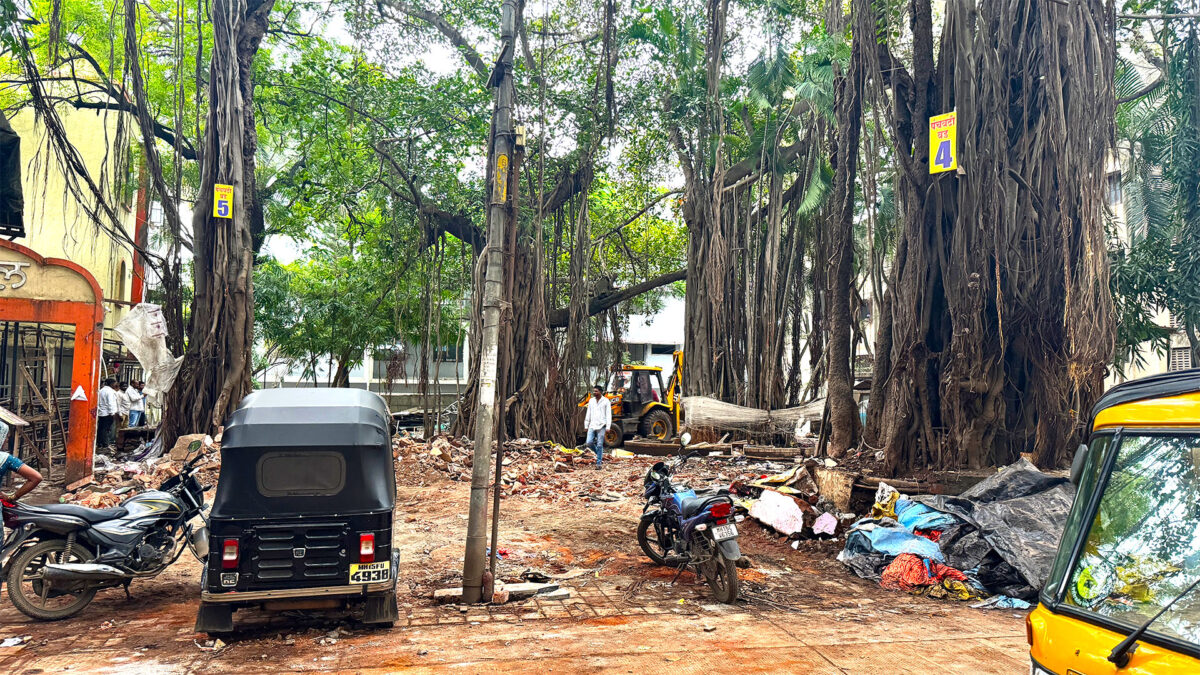
Walls come down near Sita Gufa, old trees come into view
On my visit today I found heavy machinery and rubble where a low boundary wall used to separate the road from the old banyan trees (Vat Vrikshas) near Sita Gufa.
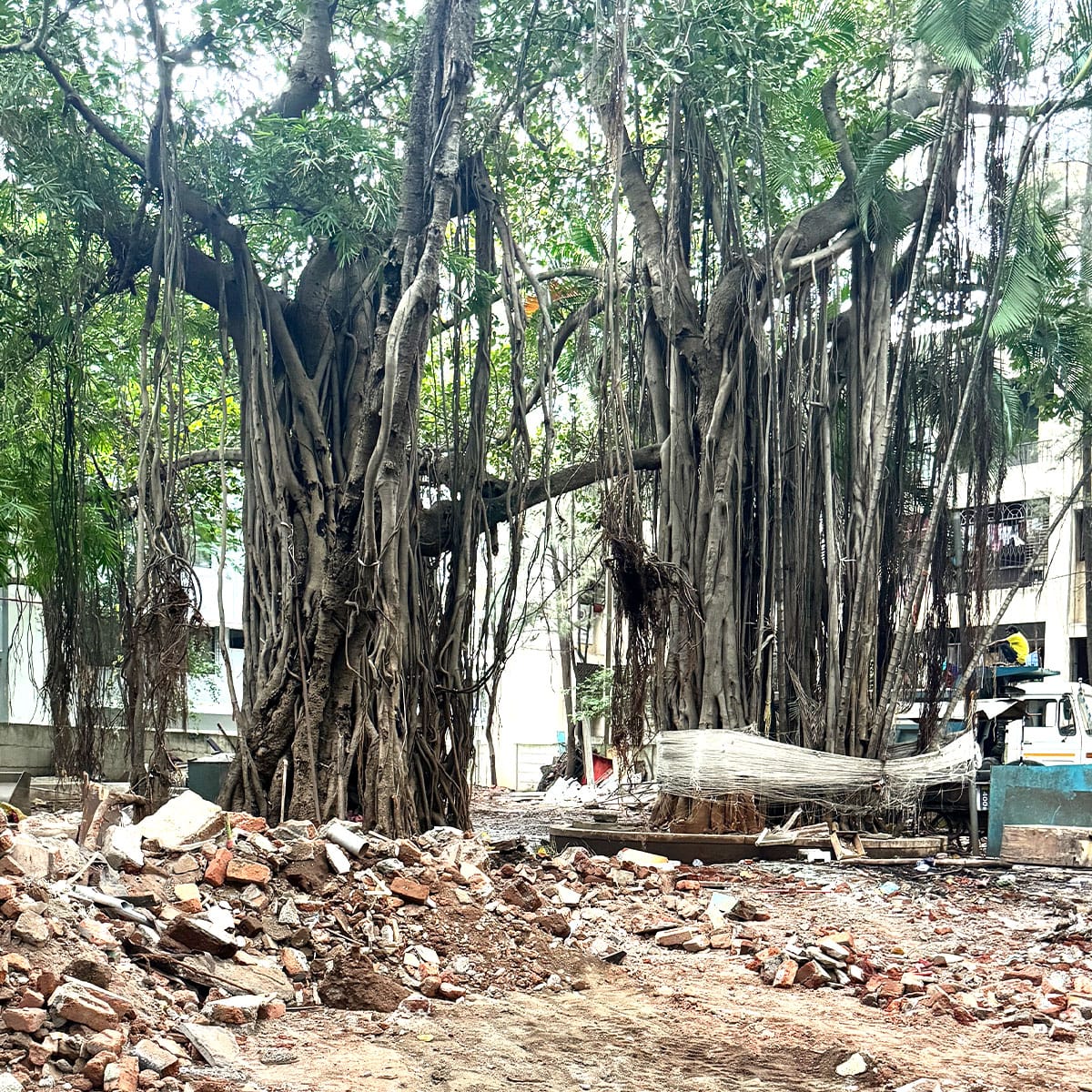
The removal of the wall now gives pedestrians an uninterrupted view of the trees that were previously seen only from behind the compound wall.
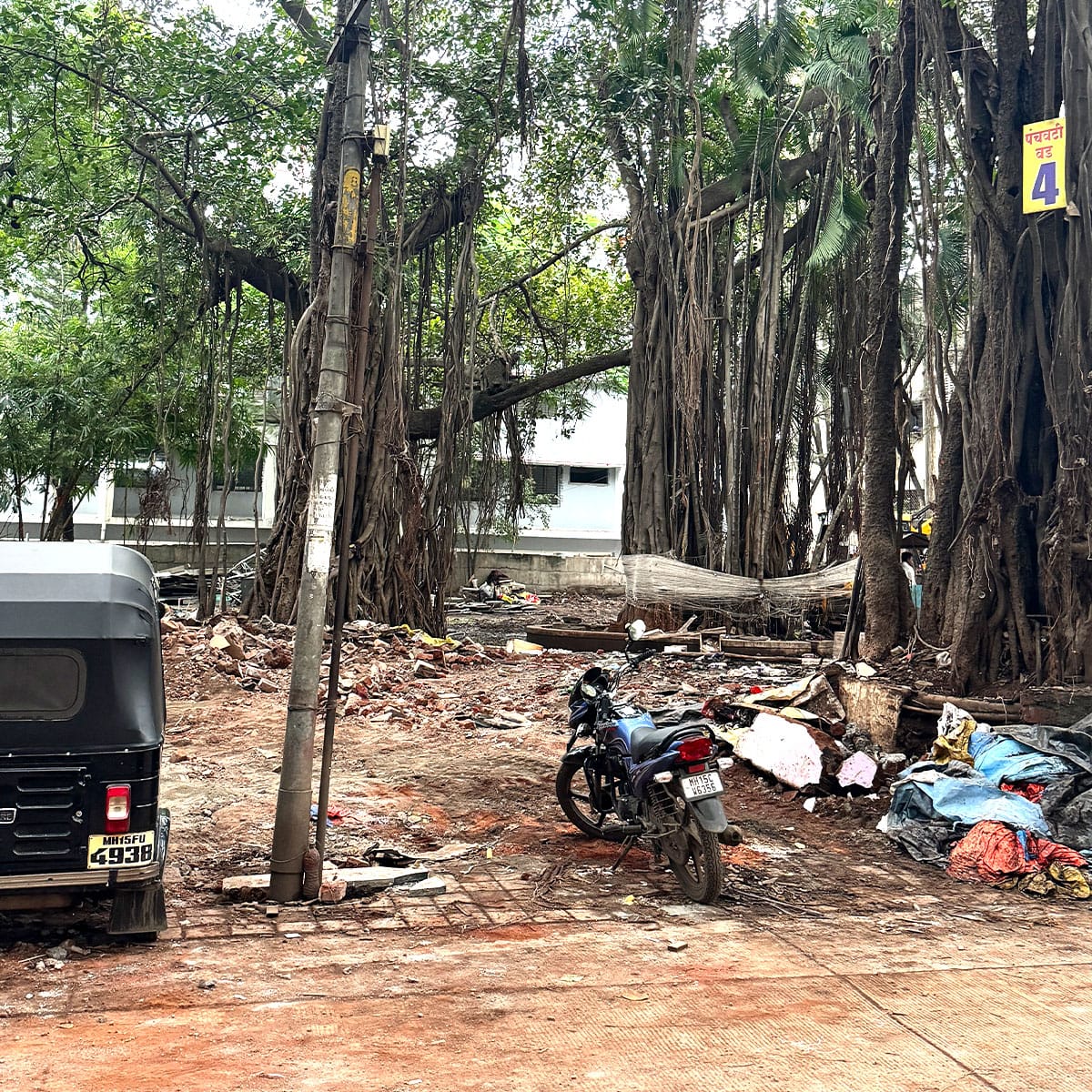
Locals I spoke to described the scene as emotional – the trees are regarded as sacred and being able to stand right beside them is already changing how devotees experience this part of the Ram Kal Path project route.
This update is part of our ongoing coverage of Nashik City News on heritage and infrastructure developments.
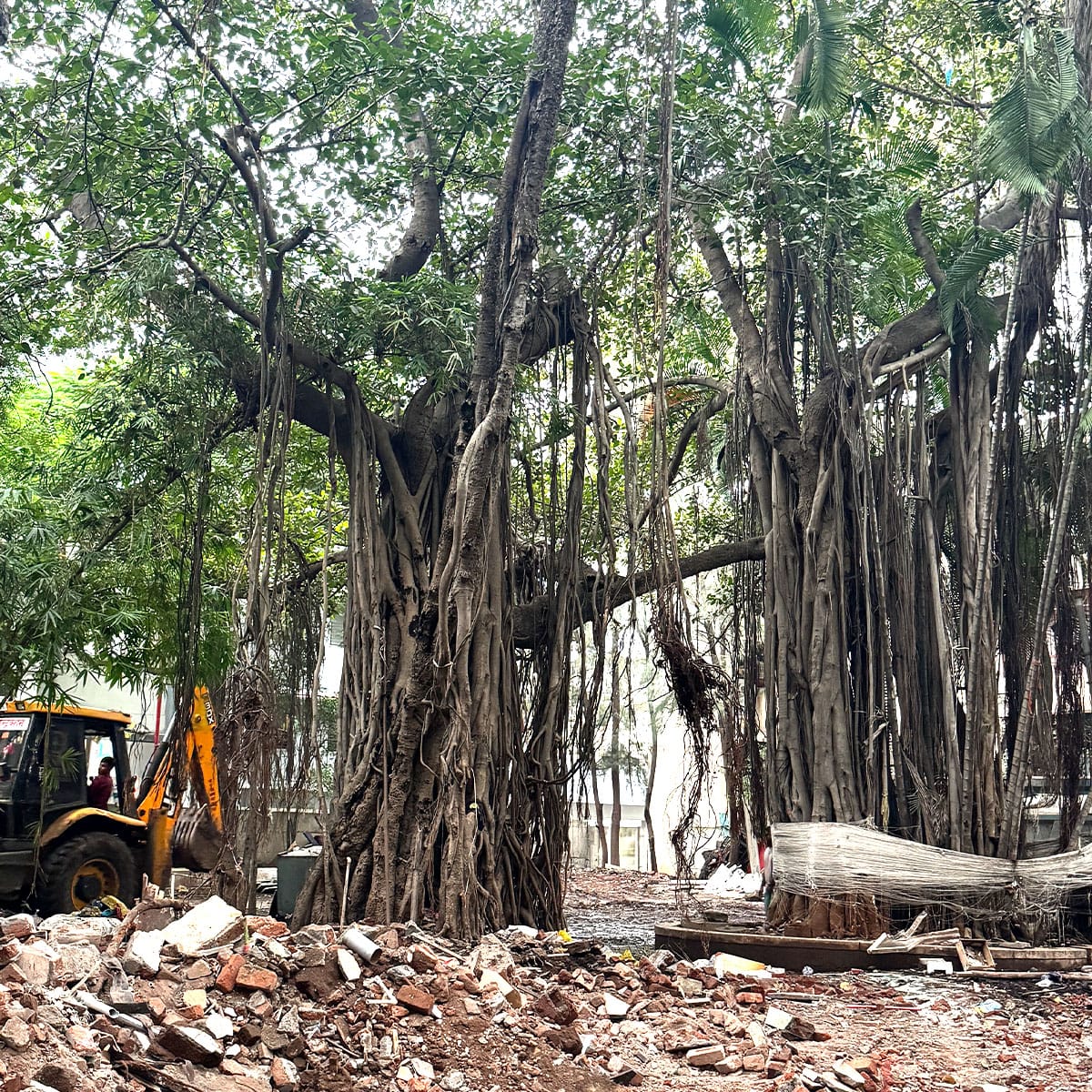
Kalaram Temple garden cleared for an open approach
A short walk of about a minute from Sita Gufa brings you to Kalaram Temple. The small garden and its periphery wall outside the temple have also been dismantled; the inner concrete structures have been removed leaving mature trees intact while opening the space up to the street.
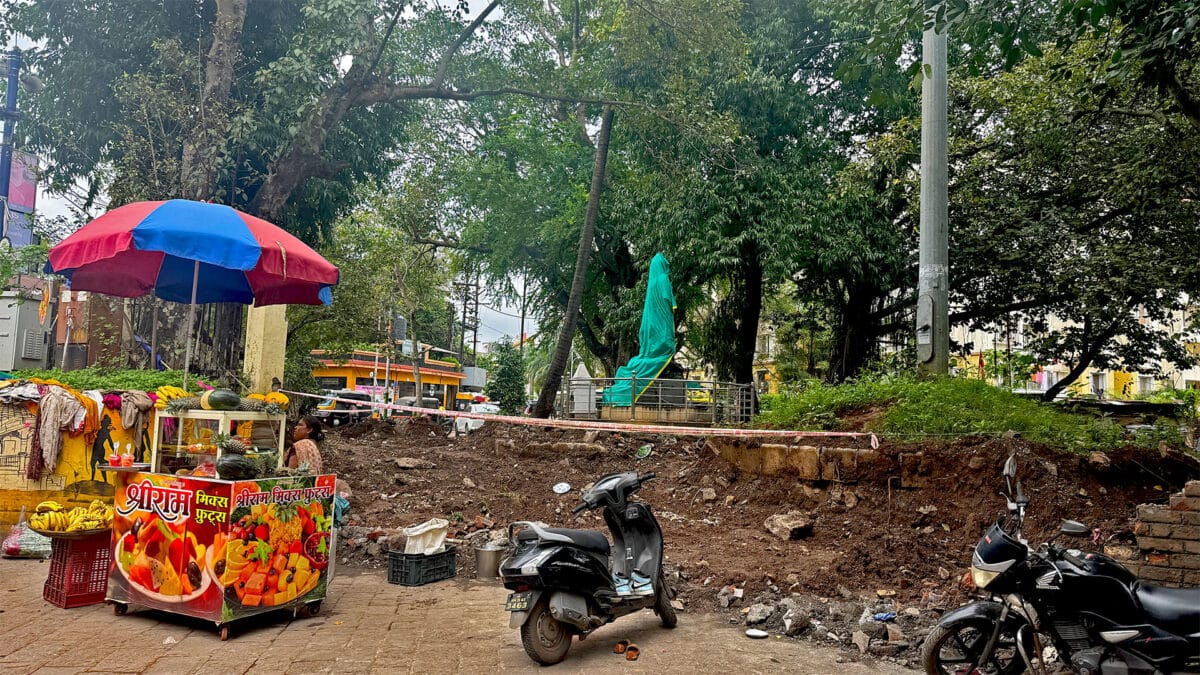
The plan appears to retain greenery while opening space for better crowd flow – important for events like the upcoming Simhastha Kumbh Mela 2027.
Simultaneous facade renovation activity on nearby buildings also could be seen – green safety nets were visible on several buildings during my walk around the place.
For devotees following heritage developments, this is not just temple news but also important news from Nashik, marking the start of visible changes on the Ram Kal Path route

What this phase means for the Ram Kal Path project
The Ram Kal Path project – part of a wider push to upgrade the Sita Gufa to Godavari ghat and Ram Kund corridor – has been under civic discussion and planning for some months.
Nashik Municipal Corporation and civic officials have publicly reviewed and advanced plans for the corridor; recent municipal announcements indicate investments and façade-upgrade initiatives intended to improve the visual and functional quality of streets along the route.
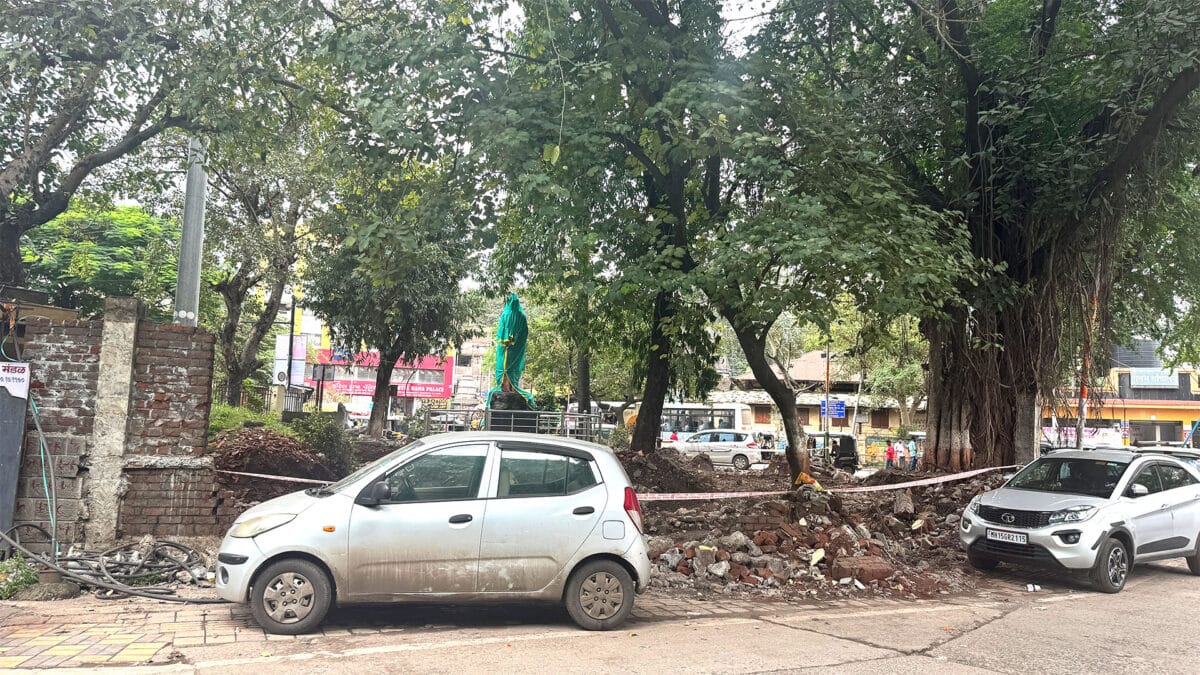
What I saw on the ground – practical details
- The Sita Gufa site: the boundary wall is removed; rubble and earthworks remain; mature banyan trees are left intact and now directly visible from the road.
- Kalaram Temple front: the garden’s perimeter wall and some inner structures have been dismantled; trees appear preserved while the ground is opened up.
- Neighbouring buildings: scaffolding and façade-renovation nets were visible on several buildings nearby – these appear to be independent façade works likely tied into the corridor vision.
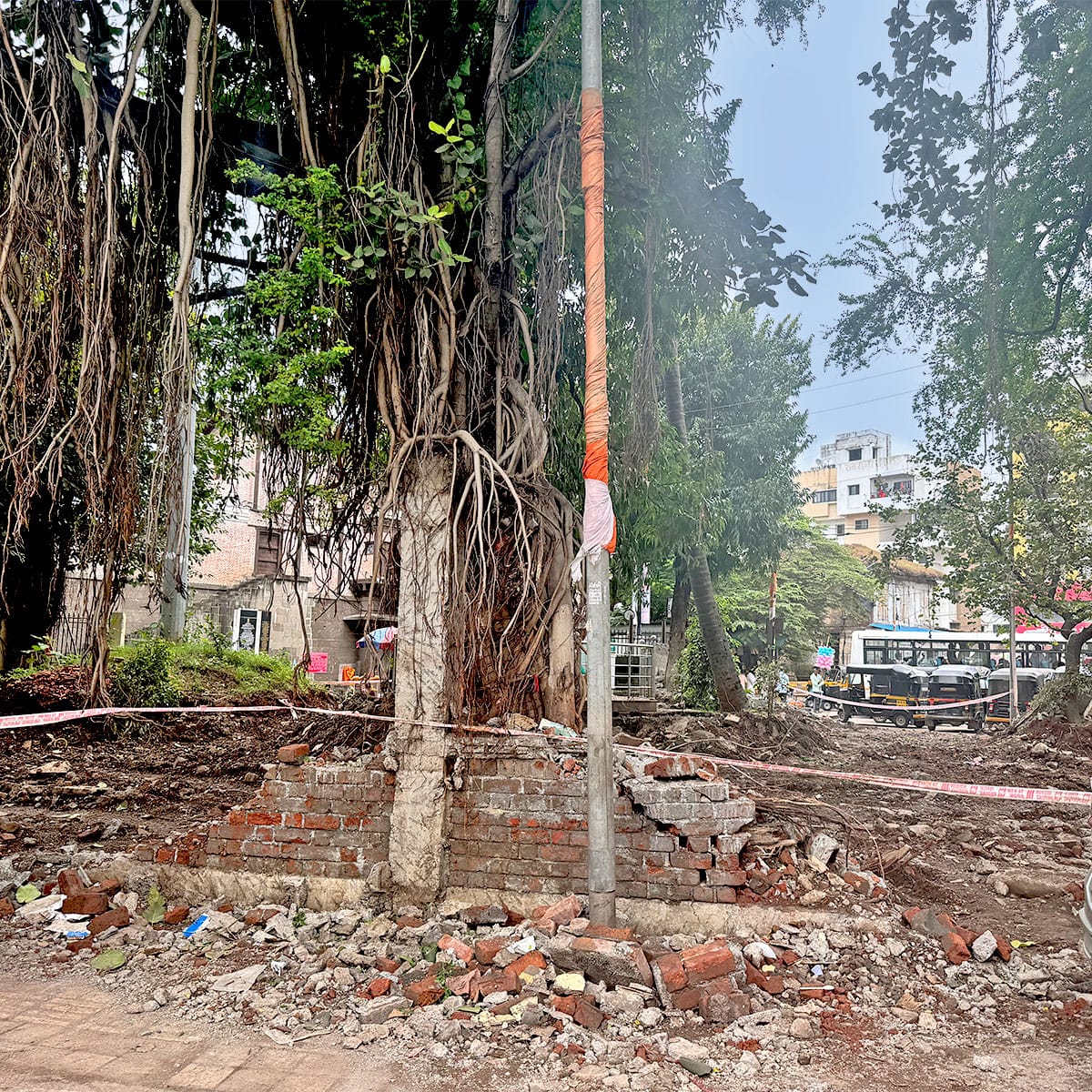
What residents and devotees can expect next
Officials have previously signalled a push to complete several Ram Kal Path elements as part of broader city preparations; this early visible work suggests that implementation on the ground is moving from planning into execution.
Preservation note – trees must remain central
One practical and civic point stands out: these banyan trees are old and culturally significant. The most welcome aspect of today’s work was that the trees remain, and the clearance appears to remove built concrete enclosures rather than the trees themselves.
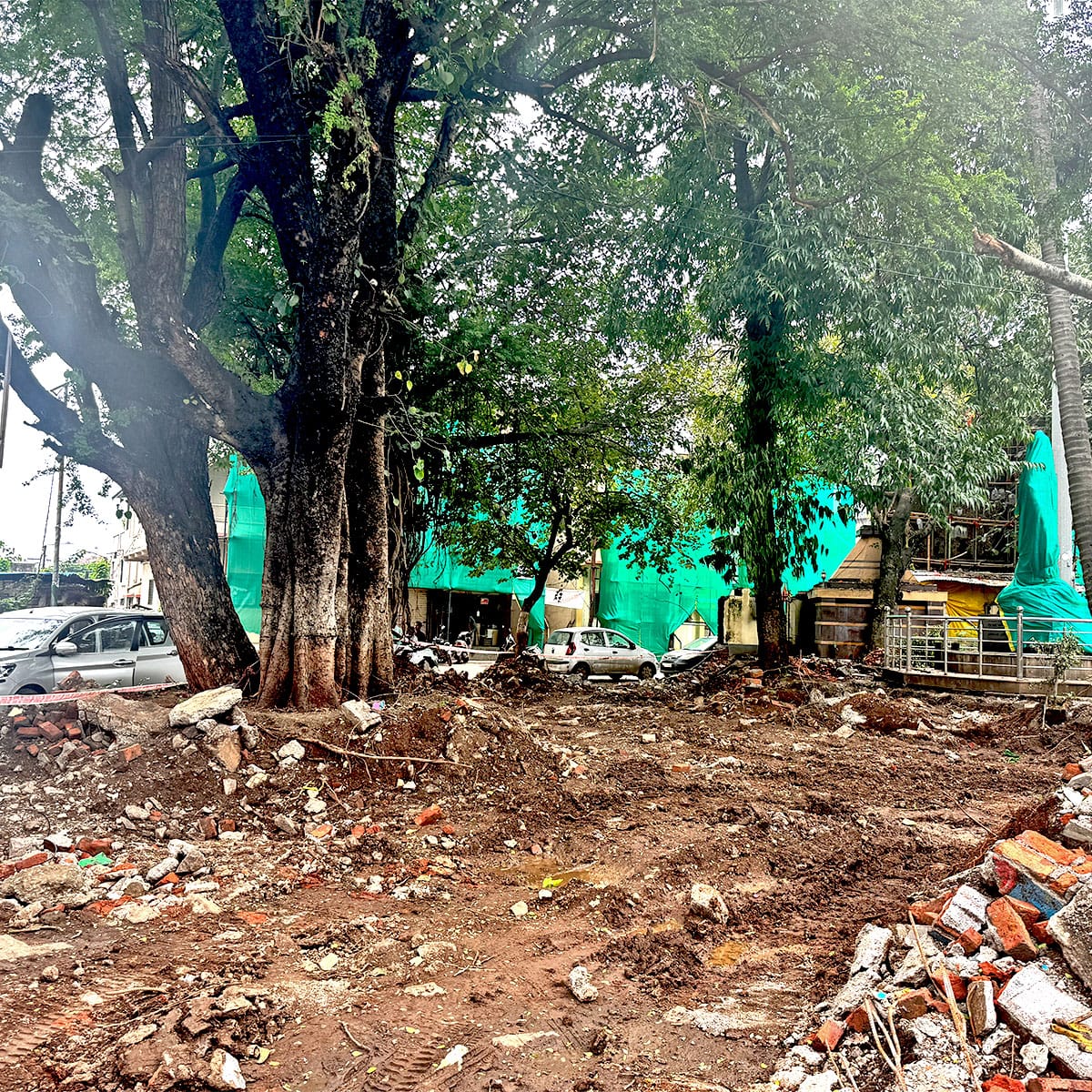
Why this matters now
With Nashik positioning itself for larger pilgrim flows and heritage-focused upgrades, early work at Sita Gufa and Kalaram Temple signals an intention to make the cultural Godavari corridor more accessible and presentable.
Opening the old banyan trees to the street reconnects everyday city life with the sacred trees and makes the route feel public and alive again – a small but meaningful first step in a wider scheme that will shape how pilgrims and residents move through Panchavati in the years ahead.
Ram Kal Path: Nashik’s Heritage Walkway
The Ram Kal Path project has been envisioned as a cultural and spiritual corridor, connecting major Ramayana sites across Panchavati – from Sita Gufa and Kalaram Temple to the ghats along the Godavari and Ramkund.
Once completed, the walkway is expected to enhance both the pilgrim experience and Nashik’s identity as a city of heritage and culture!
Stay tuned for more Nashik City News updates as the Ram Kal Path project progresses.
- Champa Shashti at Khandoba Mandir Panchavati Nashik: Yelkot Yelkot Jai Malhar! - 29 November 2025
- Mohanlal Ji Premium Veg Thali & Banquet Nashik Review 2025 - 22 November 2025
- Margashirsha Month 2025: Mahalakshmi Guruvar Vrat Katha Pooja Dates & Significance - 21 November 2025
